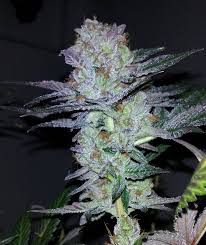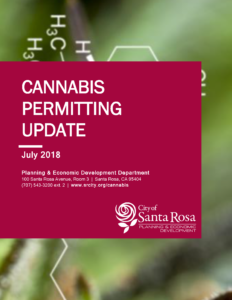CalGreen and the Cannabis Industry
CalGreen and the Cannabis Industry
As if the cannabis industry didn’t have enough legal hoops to jump through! Unfortunately, your cannabis grow facility, processing plant or distribution center will also need to comply with the current California CalGreen Code.

Bubba Kush Clone
In this case “calgreen” does not refer to Bubba Kush or Gorilla Glue. It’s part of the California Building Code and it can be somewhat ominous for your business.
CalGreen sets energy usage and water consumption limits for your facility. On the surface these sound like good things. But, like a dab of Ghost OG, the impact can be shocking. In this case, to your wallet!
The CalGreen Chapter 5 Nonresidential Mandatory Measures applies to newly constructed nonresidential buildings, nonresidential building additions of one thousand (1,000) square feet or greater, nonresidential building alterations with a permit valuation of two hundred thousand dollars ($200,000) or above.
The code differentiates between new construction and a remodel (or alteration) of an existing building. Alteration requirements are obviously less onerous in terms of code compliance. Most new cannabis businesses are started in existing buildings due to time constraints and costs.
Cannabis Facility Alterations
For alterations of existing buildings, the following code requirements will need to be satisfied. Generally speaking, the code does not require existing building walls, floors or roofs to be upgraded to the current code.

Mendocino Use Permit Application
The exception would be if you choose to add a building addition. In this case you could be required to upgrade the exterior walls and windows outside of the new addition area. This is one of those cases where having a knowledgeable CalGreen Consultant who can work with the local building department could save you many thousands of dollars.
One CalGreen Code exception occurs if the existing building air conditioning system contains the old-style refrigerant, such as R-22. This is an ozone-depleting refrigerant and if your building air conditioning system is using it you will have to replace the equipment that serves the un-remodeled area. This can be a very costly expense!
This is a perfect example of the benefit of having a knowledgeable code consultant inspect your potential facility before you sign the lease. What you may be saving in the lease rate, could end up costing many times that in required building upgrades.
Fundamentally, any new systems that are added to an existing building must comply with the current code requirements. For example, if you are in an area that requires Tier 1 compliance (such as Santa Rosa), new air conditioning or dehumidification equipment will need to meet the increased CalGreen Code requirements for building efficiency. Likewise, light fixtures and their controls must also meet the more stringent Tier 1 requirements.
All new plumbing fixtures will need to meet the CalGreen water efficiency requirements.
Low VOC paints, adhesives and carpets must be used and documented during construction.
All composite wood products such as plywood, particle board or fiberboard must meet the requirements for formaldehyde content and be fully documented.
Cannabis Facility New Construction
The requirements that will have the greatest effect on a newly constructed cannabis facility include the following.

Santa Rosa Permit Activity Update
5.106.4 Bicycle Parking: CalGreen has requirements for both short term and long-term bicycle parking.
5.106.5.2 Designated parking for clean air vehicles. In new projects or additions or alterations that add 10 or more vehicular parking spaces, provide designated parking
for any combination of low-emitting, fuel-efficient and carpool/van pool vehicles. The code contains a table that designates the number of parking spaces required.
5.106.5.3 EV charging infrastructure. Requires new nonresidential developments to facilitate future installation and use of EV chargers. EV supply equipment shall be installed in accordance with the California Electrical Code.
5.303.3 Water conserving plumbing fixtures and fittings. Plumbing fixtures (water closets and urinals) and fittings (faucets and showerheads) shall comply with the various listed requirements. These include 1.28 gallons per flush for water closets, 0.125 gallons per flush for urinals and 0.5 gallons per minute for lavatories. Note that if you are in a Tier 1 jurisdiction the requirements are even lower than listed here.
5.410.2 Commissioning. Requires building commissioning to be included in the design and construction processes of newly constructed nonresidential building projects 10,000 sq. ft. and over to verify that the building systems and components meet the owner’s or owner representative’s project requirements. Of particular note, the requirements of the building shall be documented before the design phase of the project begins and must include a number of documents be submitted with the building permit application.
The Recurring Problem with Cannabis and the Building Code
Cannabis is a zebra in the building code world. The operational issues of a grow or production facility are simply outside the rigid framework of the building codes.

The Zebra in the Permit Room
Essentially an indoor grow facility is an agricultural operation but does not benefit from the exemptions of the agriculture building regulations. Instead they are required to comply with the same regulations that apply to office buildings. Depending on the jurisdiction this can create near-impossible situations with your building permit approval.
For example, all new buildings in California must meet over-all annual building energy usage targets. In other words your cooling and lighting must meet the same annual energy usages as defined in the California Energy Code. Currently there is no baseline for cannabis grow or production facilities. So your building ends up getting modeled based on a standard office building! The high lighting levels and cooling requirements simply can’t meet the same energy usage targets as an office building.
The way to resolve this is to engage a code consultant knowledgeable in the cannabis industry who can work with the local officials to get your building permit approved.
See the Building Standards Commission information on CalGreen here:
At CalGreen Energy Services we have years of experience in the cannabis business and permitting. We can simplify your CalGreen issues by working with the local authorities to reduce your obligations and costs.
We respond quickly to emails and voicemails. We will put together a proposal for you right away and can typically start on your project within a couple of days.
Email or call us now to see how we can help you:
Email: gary@calgreenenergyservices.com
Phone: 707-328-5299


Gary Welch has over 35 years experience in the field of sustainable building design. He is the CEO of CalGreen Energy Services. Gary is an ICC Certified CalGreen Special Inspector and Plans Examiner.

